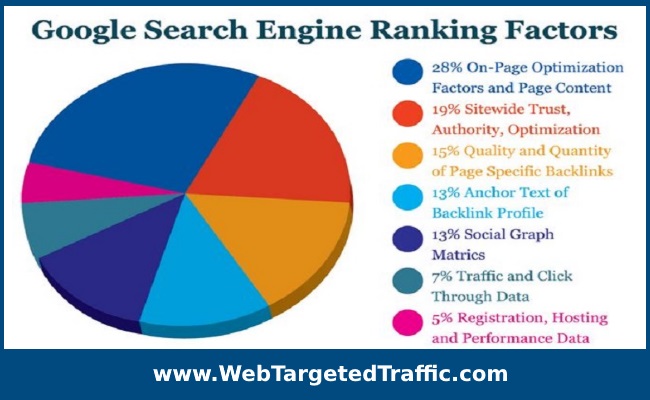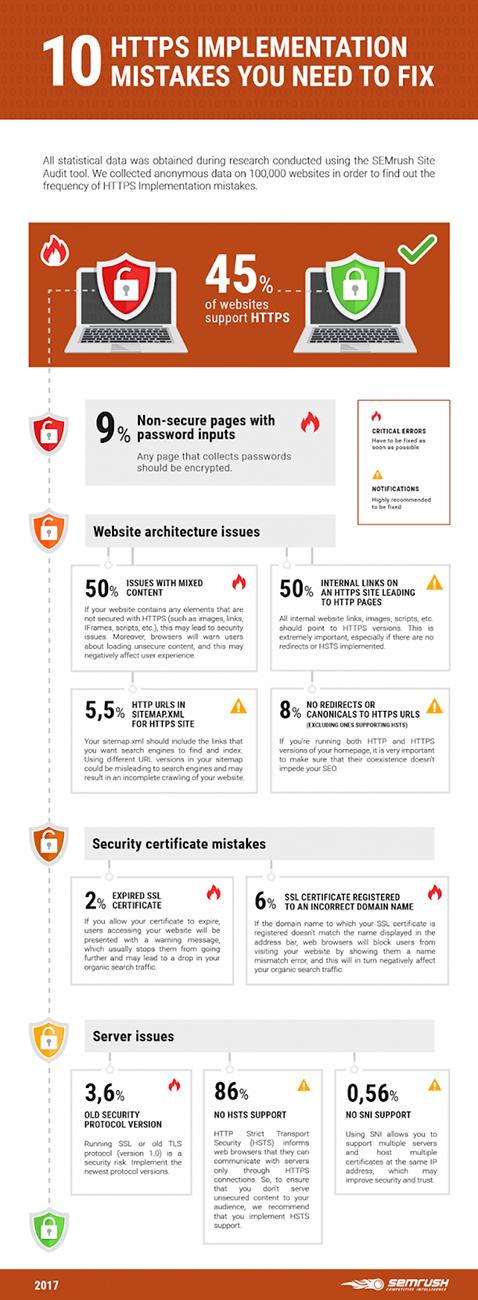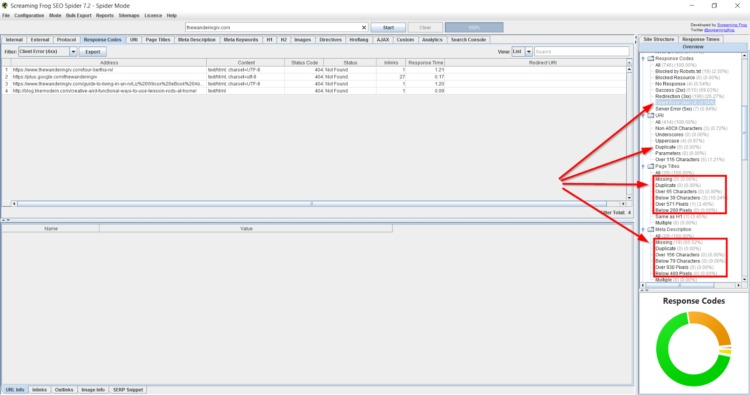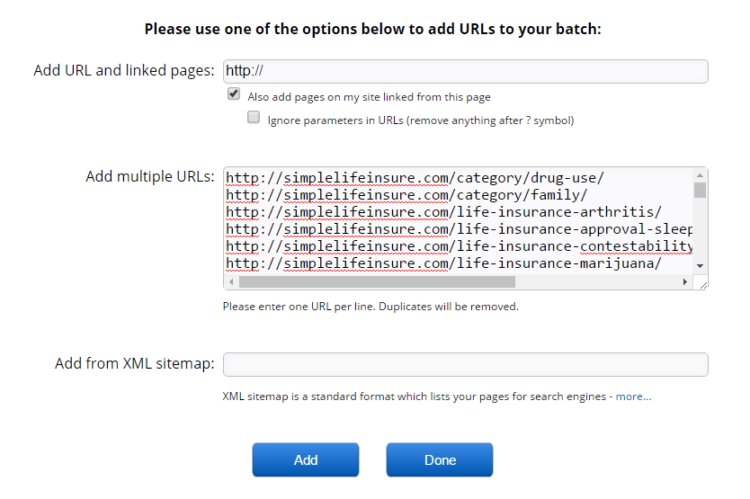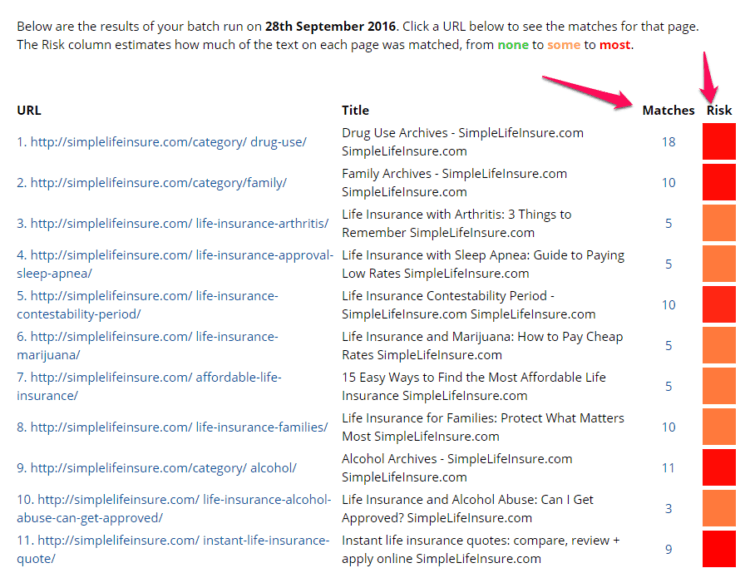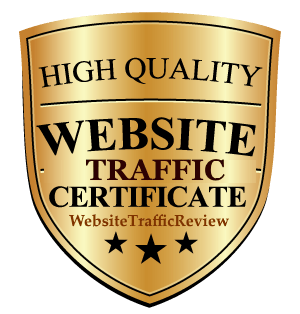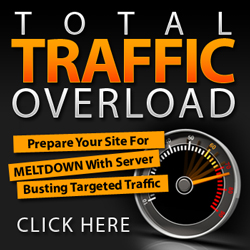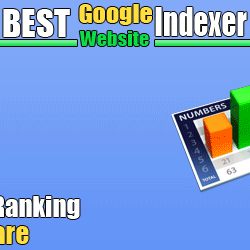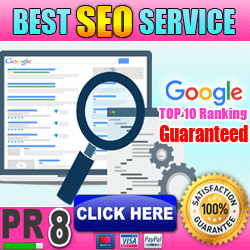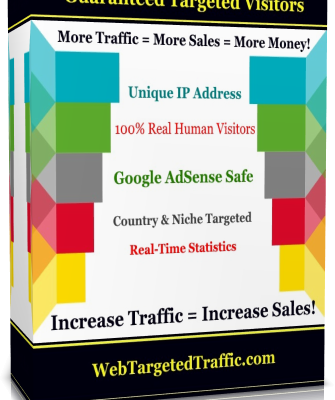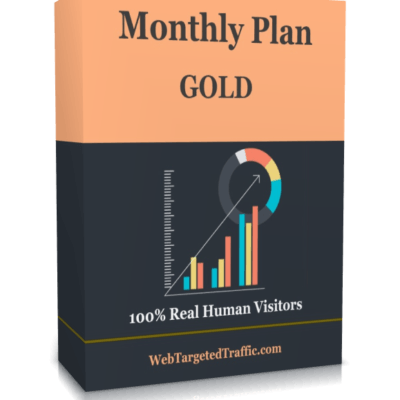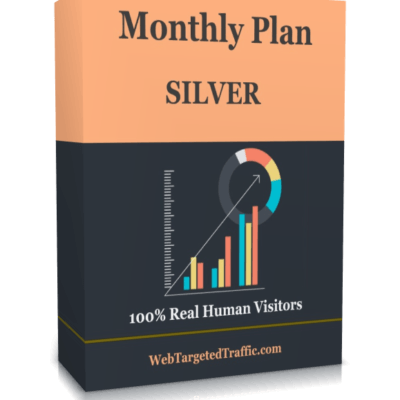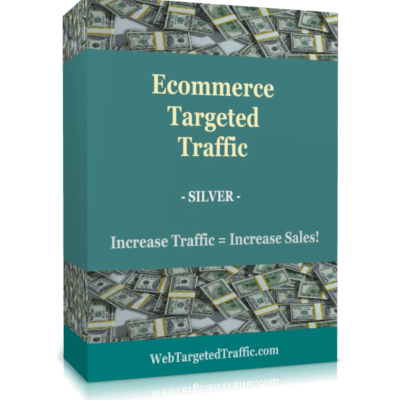Table of Contents
Having an e-commerce website without SEO is leaving cash on the table — and plenty of it.
Your e-commerce SEO, and more specifically your content optimization, is the most important aspect of your marketing strategy. You may have the best prices and the best products, but you need to rank to make sales. Ranking in Google, the most popular search engine in the world, is crucial. Ignoring SEO means you’re taking the risk of not being visible during your customers’ buying journey. When you aren’t visible on search results, fewer customers know about you, you sell less, and your growth slows down. At the same time, your competitors will increase sales and profits — and you’re letting them grow stronger.
For most businesses, a mix of search engine optimization (SEO) and pay-per-click (PPC) will offer some of the best return on investment.
What is e-commerce SEO?
Short for Search Engine Optimisation, SEO is a specific and highly-targeted method of enhancing your website, including its content, architecture and links, so that search engines may improve the ranking of the pages of your website.
Why is SEO important for an e-commerce site?
No e-commerce brand should be without a solid SEO strategy. It is the key to attracting customers and increasing sales – without high advertising fees. There are several reasons for this:
- Millions of people use search engines each day to help them find the answers and solutions they need. In fact, 93% of all online experiences begin with search engines.
- There is a wealth of competition out there, and most search engine users will only explore the top 5 results in the search ranking. If you appear lower down than that, there’s a good chance they won’t even see you.
- It’s also worth bearing in mind that people trust organic search results more than ones that have been paid for. They therefore often ignore the paid options and go straight to those they know Google (and by default other users) have ranked highly.
- SEO is the process of organically improving the rankings of your website in search engines such as Google, Bing, and Yahoo. Search engines look at a very wide range of constantly evolving factors when deciding which websites to rank, such as:
- Your content being original, high quality, and relevant to a topic.
- Your site having healthy backlinks and buzz on other relevant sites, suggesting that it’s important.
- Your site being well built and following technical standards to enhance the user experience, as well as the abilities of search engines to review your site.
Google PageRang and Click-Through Rates
One of the metrics used by Google to determine PageRank is click through rate (CTR). CTR is used in two contexts that are relevant to us here. First, click-through rate generally refers to the percentage of users who click on a link they see. This could be in an email, on Facebook, or on the Google SERPs. It’s also used in advertising as a metric of effectiveness. Advertisers (a good source of income for many sites) usually pick websites that enjoy a lot of traffic, which in turn are dependent on how high Google ranks them, and/or how popular the sites are already.
That’s a bit of a circular logic right there, isn’t it?
CTR all depends on how well the website has optimized its content. According to Kissmetrics, ranking in the first three spots on Google typically means they get 36.4 percent, 12.5 percent and 9.5 percent CTR in that order.
Let’s say you place advertising on your site as an additional source of income (hey, even Amazon and eBay do it). In order to get people to click through on those advertisements, they first have to click through onto your site. Imagine a user is looking for ideas for a Christmas gift, and your website has some great suggestions with numerous relevant links. Assuming you’ve done everything right, that visitor is more likely to go to your site and click on the ads on your site than they would a sub-par website with no meta content, non-specific page and site titles, and no keywords. More importantly, they’re more likely to click on the advertisements on your site. That’s because your content is relevant and delivering the information that they’re looking for. Your CTR will reflect how much trust the user has in what you recommend or feature, and Google will use that as an indicator of how much trust it should place in you.
Is SEO really free?
Many people think that because SEO results in organic traffic, also called ‘free’ traffic, that it doesn’t cost anything. This isn’t entirely true.
While you aren’t paying for clicks or impressions, you do need to invest time and money into the architecture of your site and the quality and structure of your content.
Your aim is to create a long-term, sustainable stream of quality visitors to your e-commerce website. The visitors you gain through SEO are usually already interested in your product and very ready to buy – so you have less convincing to do from your side. As a result, this is one of the most worthwhile investments you can make in your online business.
Best SEO Strategies for Ecommerce Sites
Step 1: Crawl your site.
Using a tool like Beam Us Up (free) or Screaming Frog ($150 per year) to crawl your site is the single most important part of any site audit. It will reveal things like:
- Broken links on your site
- Missing alt text or metadata
- Thin or duplicate content
These things are all bad for SEO. So start this crawl and let it run in the background while we take care of a few other things (the crawl could take a while if you have a large site).
Step 2: Make sure only 1 version of your site Is browsable.
There are multiple ways a person can link to or browse your site:
- http://yourdomain.com
- http://www.yourdomain.com
- https://yourdomain.com
- https://www.yourdomain.com
Only one of these should be browsable.
Using HTTPS across your website is important for both your user experience and Google’s ranking algorithm.
You provide users confidence and security with your brand using HTTPS, and Google favors your site since it is secure.
An SEMrush study found that approximately 60-65% of websites with HTTPS rank on page one of Google.
Here is a handy infographic from SEMrush showing the 10 HTTPS implementation mistakes that you should fix on your site now.
Step 3: Check your home page’s SEO.
To do this, just ask yourself the following questions:
- Does the page contain a well-crafted, clickable title? Does it conform to the on-page SEO best practices you learned above?
- Is there a custom meta description? Is it optimised for maximising click-throughs?
- Is there one instance of the H1 tag?
- Are subheaders (H2, H3, etc.) properly used and conforming to SEO best practices?
- Is your target keyword included in everything above?
If you answered “no” to any of these questions, go fix that.
Pro Tip
The meta title, or title tag, of a page should be no more than 512px (roughly 55 characters). Otherwise, it gets truncated, or cut off, in search results. Check your page title using the Title Tag Pixel Width Checker mentioned above!
Step 4: Analyze your crawl report.
Once your crawl report is finished, it’s time to take a look. I used Screaming Frog, but Beam Us Up looks similar:
Basically, you’re looking for “Client Errors (4xx)” (aka broken links), duplicate URLs, missing or duplicate content, missing or duplicate meta descriptions and missing alt text.
Step 5: Ensure unique content.
Google hates duplicate content and it can get you whacked with a penalty ever since Google’s Panda algorithm update.
You can easily find potential duplicate content issues across the web with a premium Copyscape account. For $10 you can check up to 200 URLs using their batch tool.
Just grab the URLs from your report and paste them into the batch analyzer.
When it’s done, you’ll get a list of all the URLs with the number of duplicate content and a color-coded “risk” score.
Just click the individual URLs to find the culprits. If it’s other content on your own site, change it to make it unique.
If it’s on another site, consider contacting the site owner about it or asking them to link to your original canonical URL.
Step 6: Search for yourself on Google.
First, search Google for your brand name.
Unless you’re a brand-new business, you should be the first search result. If not, that’s a sign of bigger problems.
If you’re not first, some steps you can take to resolve the problem include:
- Building a few strong, branded links (see the link-building section)
- Building some citations on business directories (see the local SEO section)
- Making sure your site has a Google Business listing (see the local SEO section)
- Ensuring your site has a presence on all major social networks
Pro Tip
Speaking of social networks, you can use a tool like Narrow.io to help you grow your Twitter account on auto-pilot. Pretty cool, right?
Next, perform a search using the “site:” operator. For example, “site:bigcommerce.com”:

This will show you how many pages on your site have been indexed (in this case, 15,000).
This should be fewer than the number of URLs in your crawl report. If there are more, that could signal junk pages being categorized, such as product or site searches, blog category pages, or tag pages.
These pages typically have no content on them and should be noindexed (this tells Google not to index them in search results).
This will free up your site’s crawl budget — the number of pages and speed with which Google crawls your site.
Step 7: Analyze search traffic.
Take a look at your Google Analytics reports from the beginning of your site’s creation until now.
This will show you if your site was potentially hit with a penalty.

In this case a red flag would be the sudden drop and rise between August and September; however, I happen to know that was due to a redirect looping issue where the page broke.
Easy fix.
Pro Tip
You can actually use the Panguin SEO Tool to compare your analytics against algorithm updates to see if you may have been penalized. Each of those lines correlates with a Google update. Neat-o!
Step 8: Review Google Search Console.
Google Search Console (formerly Webmaster Tools) has lots of great info for our SEO audit.
First, go to Crawl -> Crawl Errors to find any errors Google’s indexing robots are having crawling your site.

Looks like I have 22 “404 Not Found” errors — in other words, links pointing to a page that isn’t there.
I actually deleted a lot of these pages, thus why they can’t be found. You may also get this from old products no longer on your store.
The best thing to do here is redirect those old pages to related product pages, or category pages (or blog posts, if you have broken blog posts).
Next, go to Search Appearance -> HTML Improvements to find any on-page issues Google found.
This will show things like duplicate content, which you should have picked up already in the crawl. But it doesn’t hurt to double-check!
Step 9: Analyze your backlink profile.
Your backlink profile is just a way of analyzing the links pointing to your site. You want to do this to ensure you’re not getting spammy links that could get your site penalized.
To perform a backlink profile analysis, log in to Ahrefs, search for your site in their Site Explorer, then click “Backlinks” in the menu on the left-hand side.

There are three things you should pay attention to here:
- Anchor text (the text that is linked to your site)
- Broken backlinks
- Sleazy links
Let’s start with anchor text.
You can see your anchor text distribution in the overview section of your site’s report, not in the backlink section.
You should see a good variety, as opposed to a lot of one word or one phrase (unless it’s your brand name, which is fine).

Looks like my two biggest are “The Wandering RV” (my brand name) and “Bill Widmer” (hey, that’s me!).
This is fine.
However, notice how 11% of all my links have the anchor text “space-saving techniques”. This is because I wrote an article for Lifehack with that backlink, then over a dozen other sites copied the text and stole their blog content.
This could actually hit my site with a penalty. If those sites that copied are low-quality, I should disavow those links (essentially telling Google not to follow them) to avoid a penalty.
Next up, we have broken links (aka easy wins!).
To see your site’s broken backlinks, go to Backlinks -> Broken.

Looks like BigCommerce has over 2 million broken backlinks! Lots of potential for scoring some “SEO juice” there. 🙂
The best thing to do here is to either create a 301 redirect from that page to another relevant page OR contact the site owner and ask them to change the link directly to a more relevant, existing page.
While the latter is a little more powerful (since redirects lose a little “link juice”), it’s waaaaay more time-consuming.
Finally, let’s talk about sleazy links.
By sleazy links, I mean links from low-quality sites that are spammy, like the ones I mentioned pointing to my site above.
Again, these can cause Google to penalize you because they may see those links as a PBN (Private Blog Network) or other nefarious black hat tactics.
To find them, just go back to your Backlinks overview and sort the results by DR (Domain Rating) lowest to highest.

All these links with a DR of “N/A” and a UR of 0 are usually crap. Look for spammy sounding URLs and crappy websites whenever you click to view them.
Step 10: Find opportunities to improve site speed.
Site speed AND crawl speed are both important to your site’s ability to rank and user experience. According to a study from Radware, 51 percent of online shoppers in the U.S claimed if a site is too slow they will not complete a purchase.
To get an idea of what you can do to improve your site’s speed go to Google’s PageSpeed Insights Tool and plug in your URL.

Google will score you on Mobile and Desktop from 1 to 100, and give you steps to speed things up. Check out this guide to improving your site’s speed.
However, if you only do one thing, compress your images. Image file sizes can get massive and slow things down, so this one step can make a huge difference.
The Takeaway….
So, SEO is a way to align the search phrases that potential customers may use with your content and architecture. You also need to build authoritative links and satisfy the technical aspects search engines use to crawl and index your site. When you do this right, you make it easy for search engine users to find you.
There are three main areas that need attention:
- General SEO:
Find the top keywords for your industry, products and services and build your site around them. Address technical issues like responsiveness, speed, access and so forth to make sure your site fulfils all the requirements for ranking highly. - On-page SEO:
Apply your keyword research to the most important parts of your website and content. Then web users will be able to find you and search engines can understand and index your site. - Off-page SEO:
Promote your website and content so related sites link to you (back-links). This shows you are valued by other authoritative sites, thereby increasing your ranking.
To increase your e-commerce sales, you need to improve your search engine ranking so more of your ideal customers can find you. Begin by making sure you understand the basic concepts of SEO, then either apply them yourself or hire an expert to do it for you.
Bear in mind that an SEO strategy isn’t an overnight process – it takes ongoing work. If you keep putting in the effort though, you’ll start to see the results: organic, quality traffic to your site.
Tools: Google Analytics, Google Search Console, Google Pagespeed Insights
******************************************
With our premium quality organic website traffic, we guarantee an impact on growing the Alexa Rank, Pagerank and other important metrics faster than the conventional SEO ways. Get the boost your website needs now!
Web Targeted Traffic is a trusted company world wide and is a legit website that sells targeted traffic.. They deliver targeted high quality real website traffic. That is why more than 75% of our clients are returning clients who already used our service in the past and believe on their quality and professional service.
Whether you are a well-known company or sole online business, Web Targeted Traffic is the most budget friendly way to reach your desired audience, get leads, boost sales, found new customers and generate brand awareness.
They deliver millions of targeted traffic on daily basis to our clients websites. Thousands of happy clients already. There packages are tailored-fit to any business to ensure that specific target audience are reached.
The result will be 100% real visitors who are actually interested in learning more information about a website such as yours!
WebTargetedTraffic.com is The Best Rated Website Traffic Seller of 2018 and 2019 — Read our reviews here!
Check our Certificate of Website Traffic here…
So what are you waiting for? Choose your traffic package today and let us boost your business by sending thousands of real, unique visitors to your website.
Buy targeted traffic that converts. Increase your website traffic today with our range of affordable traffic services. Get targeted website traffic today!

- Cheapest Price Guarantee
- Up to 3 Targeted Keywords
- Up to 3 Targeted Search Engines
- Worldwide Visitors (100+ Countries)
- 50%+ Website Traffic Comes from USA
- Fast Activation Under 24 Hour
- Free Compensation for Loss Traffic
- High Search Engine Placement
- Google Safe AdSense
- Improve Alexa Ranking
- Perfect for Ecommerce Websites
- Great For Local Recognition
- Great For International Recognition
- Responsive Client Support
- More Bonus for Larger Package
- Satisfaction Guaranteed

